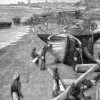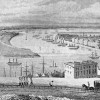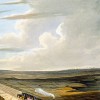
Kathleen Frederickson, “British Writers on Population, Infrastructure, and the Great Indian Famine of 1876-8”
This article examines British writing about the 1876-8 famine in southern and western India. In British newspapers and journals, the turn to thinking about famine in terms of the total population obscured the extreme variations in food access that worsened with rising economic inequality. When the British press in the late-1870s turned to human causes of famine, they either argued that India’s population overburdened India’s land, or suggested that more rail construction would prevent enough deaths sufficiently to mitigate British responsibility for famine conditions. The turn to population-based arguments helped either to perpetuate the belief that famine was a quasi-natural part of India or to parse the sudden increase in the frequency and severity famines in India under British rule.

Carolyn W. de la L. Oulton, “‘Coquetting amid incredible landscapes’: Women on the River and the Railway”
The opening of the first direct railway line from London to the Kent coast in 1862 challenged traditional dichotomies between town and country, and contributed to a growing nostalgia associated with the river. Fin-de-siècle writers used the apparent opposition between rail and river, city and country, to ask new questions about the place of women in a rapidly changing world; the transition to a new century further strained the traditional dichotomy between feminised pastoral and masculinised industrial, a tension reflected in the problematic portrayal of rail and water in the work of E. Nesbit.

Paul Fyfe, “On the Opening of the Liverpool and Manchester Railway, 1830”
Opened to the public in 1830, the Liverpool and Manchester Railway effectively inaugurates the modern railway era. This essay sketches the construction of the L&M, the memorable events of its opening day, and its impact upon representations of the railway and its risks. The opening of the L&M reveals the tumultuous political dynamics of pre-Reform Bill Britain as well as deep uncertainties about industrial modernity, encapsulated by a fatal accident to MP William Huskisson.
